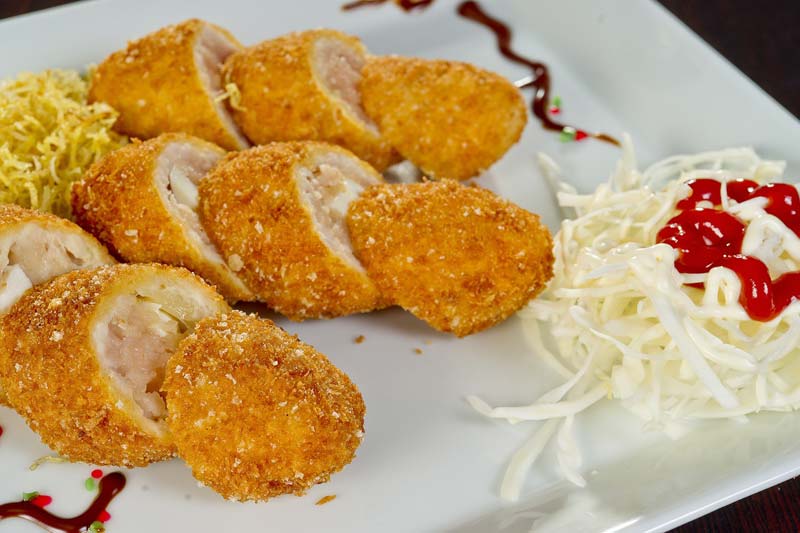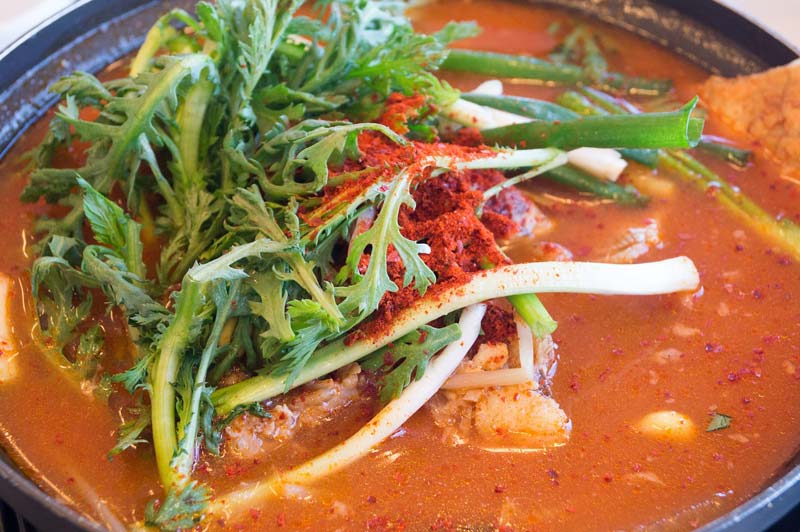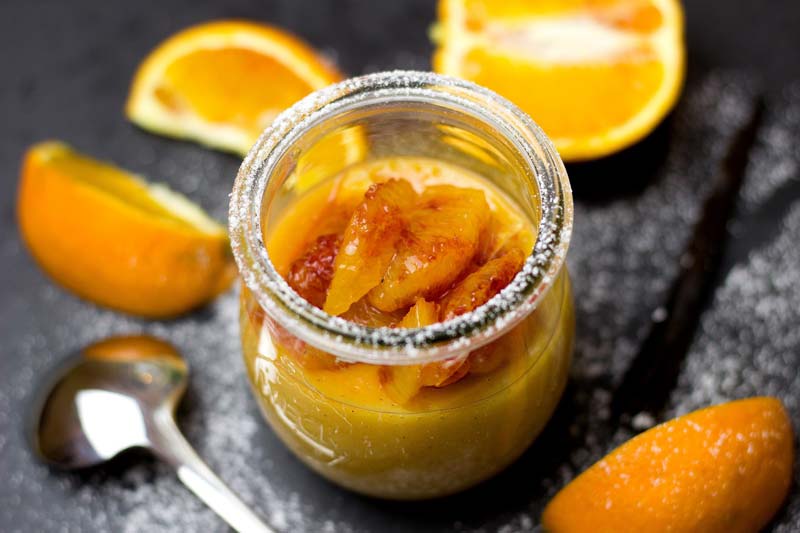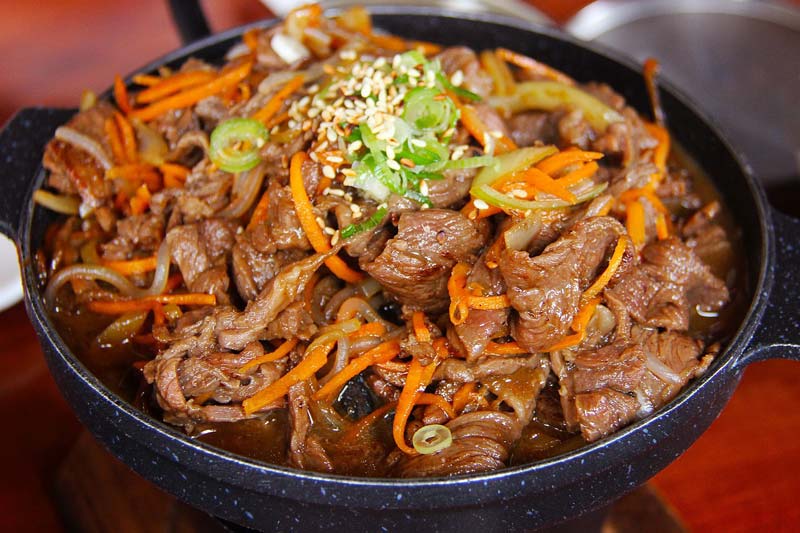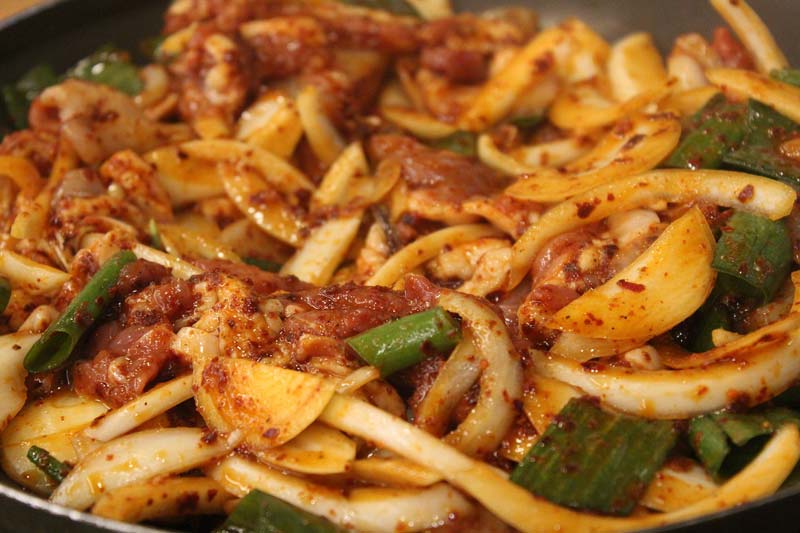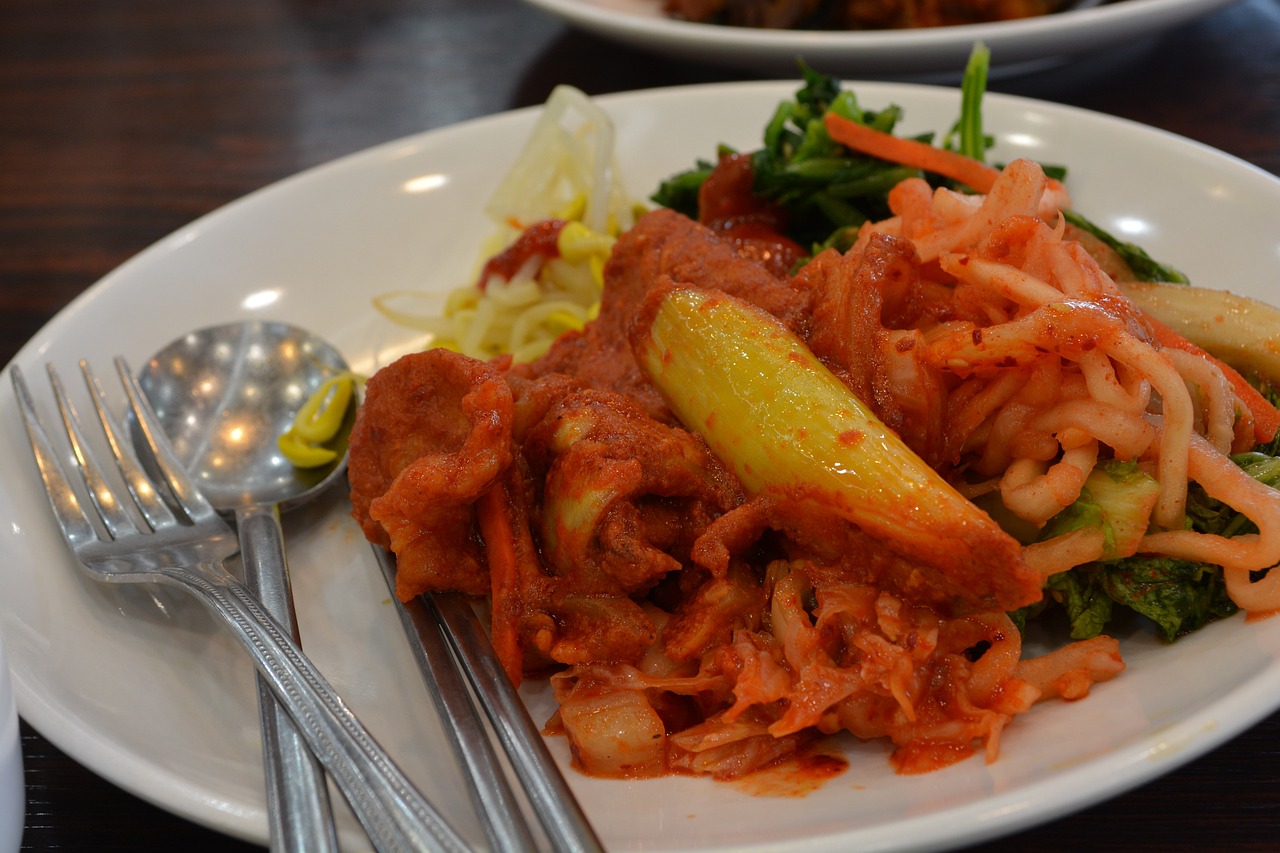Naengmyeon is prepared by boiling and cooling off noodles as a ‘sari’ (coil) and pouring seasoned and iced water into the bowl, and then have garnishes be laid on top of them. Among the materials of noodle, buckwheat can make the most delicious cold noodles, i.e. kneading buckwheat flour and pressing them in a machine to transform into noodles. Cold noodles were mainly developed in the northern area of Korea which had large harvest of buckwheat.
In particular, Pyeongyang cold noodles and Hamheung cold noodles were famous, which have been succeeded to date.
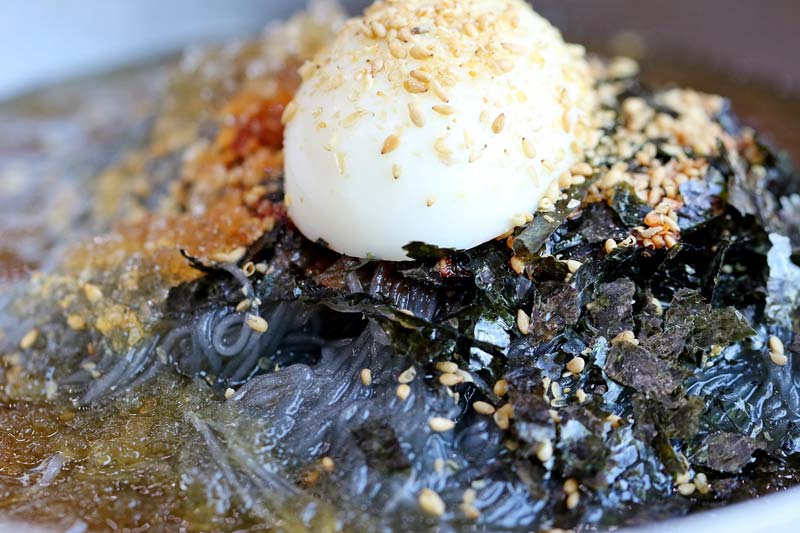
Naengmyeon is prepared by boiling and cooling off noodles, fot. manseok_Kim / pixabay
In Pyeongyang city, citizens would enjoy cold noodles at night in winter. Returning home from the freezing outside, they took out icy juice of watery kimchi from jars and made cold noodles, and they ate the noodles on a heated floor while thawing their frozen body. As such, cold noodle was a delicacy of the winter season in the northern area of Korea.
Origin
As an old record regarding cold noodles, the book ‘Dongguk Sesigi’ written in 1849 (late Joseon dynasty) writes that;
“As a seasonal food in winter, buckwheat noodle added with radish kimchi and cabbage kimchi, also with pork laid above them, is called Naengmyeon. Among its kind, Pyeongyang cold noodle made in Pyeongan province has particularly excellent taste.”
(korfood/korfood4_1.jsp)
